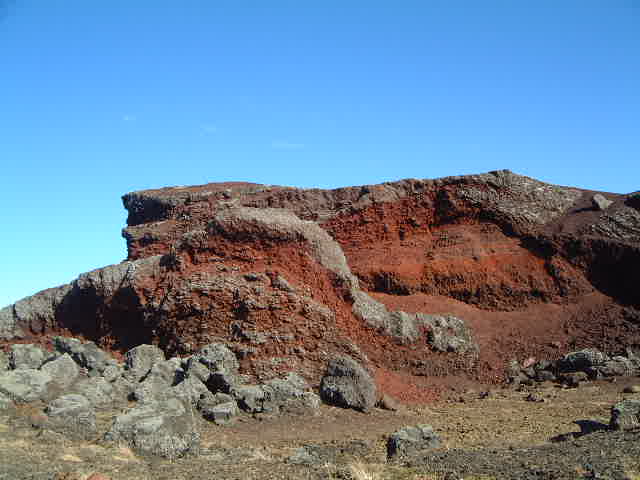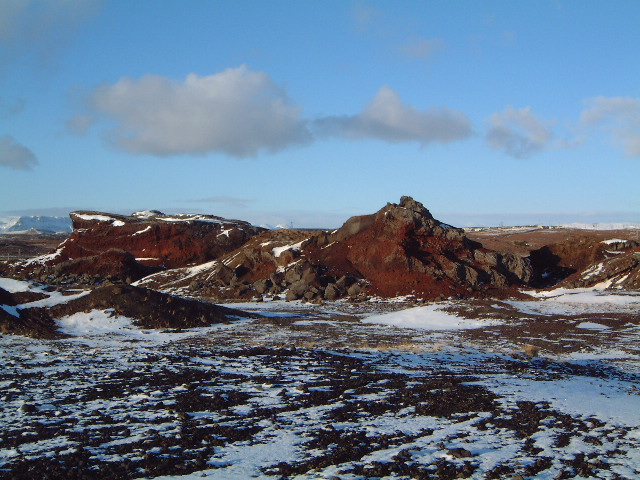Vinna við nýjar heimasíður Umhverfis- og orkustofnunar og Náttúruverndarstofnunar er í gangi. Heimasíða Umhverfisstofnunar er virk á meðan vinnunni stendur. Information in English
Raudholar, Reykjavik

Rauðhólar was protected as a country park in 1974. Pedestrian traffic is allowed in the whole area, and obstructing it with fences is prohibited unless there are crossing steps at regular intervals. Horse riding paths may not be closed with fences. However, these provisions do not apply to fences around water sources, since traffic is prohibited within those fences. All ground disturbance is prohibited within the country park, except with the Environment Agency’s permission.
The country park is 130.2 ha.
Endangered Area
The area is on the orange list.

Strengths
The area is a collection of pseudocraters, and its westernmost part is unspoiled, but the pseudocraters had previously been disrupted. The Environment Agency has performed tasks in the area, such as mowing lupin and picking up garbage. There are numerous horse riding paths in the area, and the City of Reykjavík has put up signs by many of the riding rest stops. WWII relics can still be found in the area, but they have not been labelled.
Weaknesses
The area is widely used by horseback riders during the winter, and riding paths appear to be widening and getting trampled down, especially where the soil is muddy or puddles form on the riding paths. The area is very accessible, and garbage is often dumped in the parking lots and within the area.
Threats
- A lot of garbage accumulates in the area.
- The area is a water protection area and near a water collection area.
- There are still instances of people driving into the area, ignoring the chains put up to close the road.
- Riding paths have been maintained, but markings for riding paths and hiking trails are needed.
- Information signs are in pretty good condition, but educational signs are needed, e.g. for relics.
- The fence that protects the eastern part of the area is broken in many places.
- Lupin has entered the area, and a few giant hogweed plants have been found.
Opportunities
- A protection plan should be prepared.
- Garbage should be regularly cleared from the area.
- The giant hogweed must be eradicated and the lupin kept at bay as much as possible.
- Supervision in the area must be increased, especially during summer.
- Hiking trails and riding paths must be marked.
- Relics need to be labelled in consultation with the Archaeological Heritage Agency of Iceland.
- Education and information in the area should be increased.
- The area is ideal for activities such as outdoor recreation and horseback riding.
- Collaboration with secondary schools in the Reykjavík area regarding volunteer work in protected areas should be encouraged.
- A management agreement with Reykjavík is planned.
- Work began on assessing the condition of the area on behalf of the city, as well as on mapping vegetation.
- The spread of lupin is to be specifically mapped.